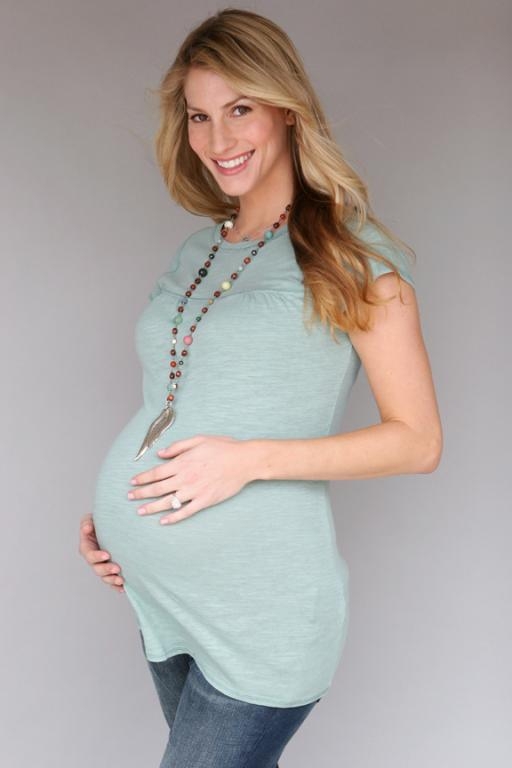Maternity Wear
Maternity clothing is worn by women in some cultures as an adaptation to changes in body size during pregnancy.
History
Dresses did not follow a wearer's body shape until the Middle Ages. When western European dresses began to have seams, affluent pregnant women opened the seams to allow for growth. The Baroque Adrienne was a waistless pregnancy gown with many folds. Aprons were also worn, to close the opening left by jackets. 19th century maternity clothing was tailored to hide pregnancy.
For many decades during the 20th century, maternity wear was considered a "fashion backwater." Pinafores were the most common style and were often sold through nursery shops. Maternity clothing hasn't generally been considered a potentially profitable area for most major clothing manufacturers. This is due to a belief that many women wouldn't purchase clothes intended for only a few months of wearing. However, with wide media interest in celebrity pregnancies beginning in the late 1990s, the maternity wear market grew 10% between 1998 and 2003. In 2006, Kate Bostock of Marks & Spencer said the demand for maternity clothes was growing because "Nowadays women are working during pregnancy, and travelling, and going to the gym, so their clothing needs are greater and more diverse."
Further developments in maternity clothing styles have meant that many maternity tops are also made to enable discreet nursing, extending the usable life of maternity clothes beyond just the period whilst pregnant.
Cultural trends in maternity wear
 Maternity clothes around the world have been undergoing significant changes. In both Eastern and Western cultures, there is greater demand for fashionable maternity clothes. In Western cultures the influence of celebrity culture means that pregnant women in the public eye are taking the lead on maternity fashion. As a result, pregnant women are no longer trying to hide or disguise their pregnancy, instead choosing to wear garments which closely fit their new shape, often emphasising the bust and abdominal area. High-tech fabrics such as elastane are the material of choice for maternity wear in Western cultures as they allow garments to be form-fitting while allowing the abdominal area to expand as necessary.
Maternity clothes around the world have been undergoing significant changes. In both Eastern and Western cultures, there is greater demand for fashionable maternity clothes. In Western cultures the influence of celebrity culture means that pregnant women in the public eye are taking the lead on maternity fashion. As a result, pregnant women are no longer trying to hide or disguise their pregnancy, instead choosing to wear garments which closely fit their new shape, often emphasising the bust and abdominal area. High-tech fabrics such as elastane are the material of choice for maternity wear in Western cultures as they allow garments to be form-fitting while allowing the abdominal area to expand as necessary.
Women in Eastern cultures, however, have maintained a much greater sense of modesty when it comes to maternity wear. In both the Islamic and Asian cultures, maternity wear is much less fitted, hemlines are longer and necklines higher. Modern Islamic maternity wear uses fabrics with brighter colours and bolder prints. Aside from cultural modesty, Chinese women have sometimes sought to hide their second pregnancy in less shapely clothes because Chinese policy has dictated that they can only have one child. In Chinese and Japanese cultures, there is a fear of radiation from devices such as computers and mobile phones, especially during pregnancy. Even though there is no evidence to support this (according to WHO), Asian maternity wear is often manufactured from “anti-radiation” fabrics.
See your brand here - contact us at info@babiesonline.co.za
Please see the following:


